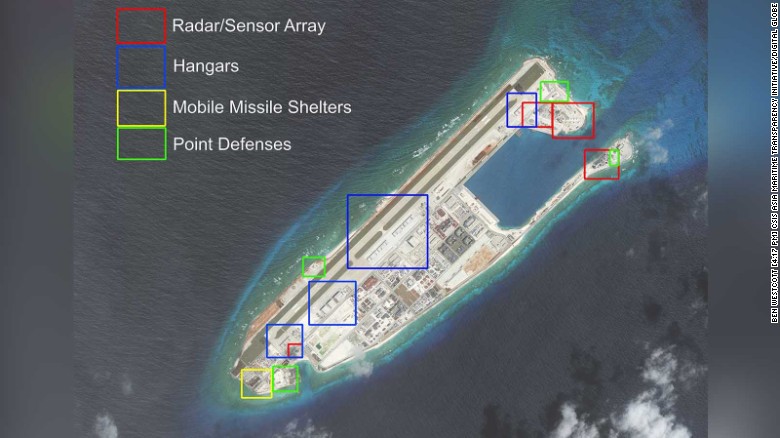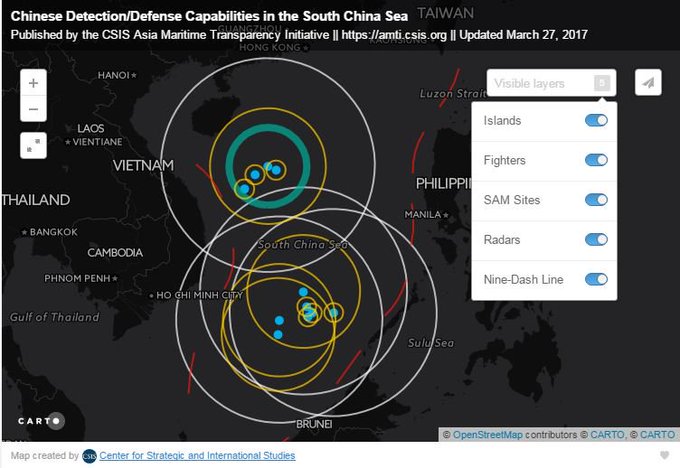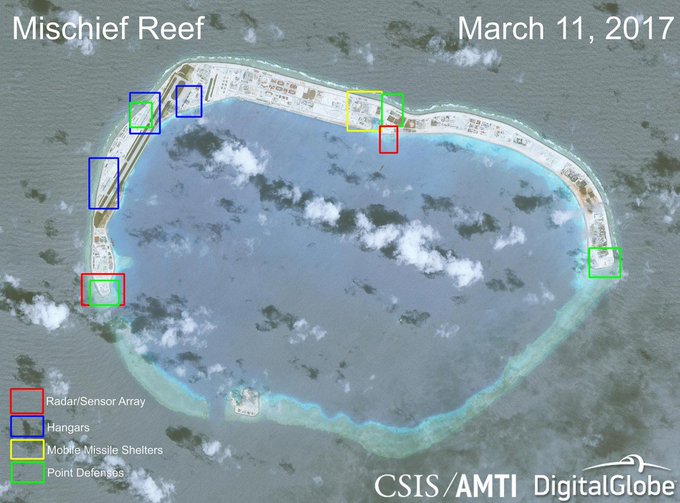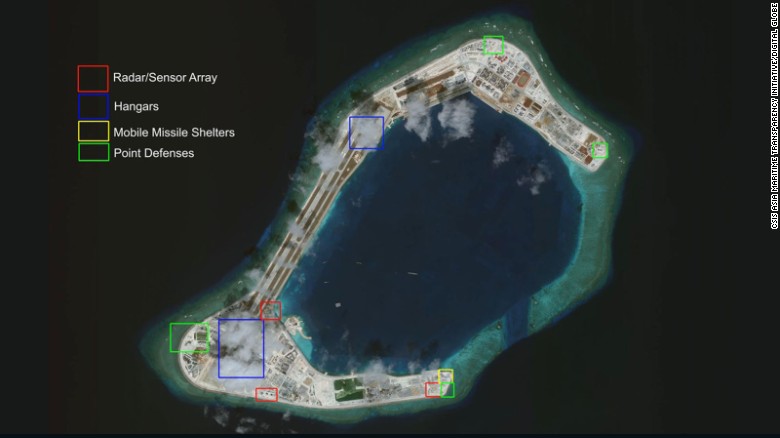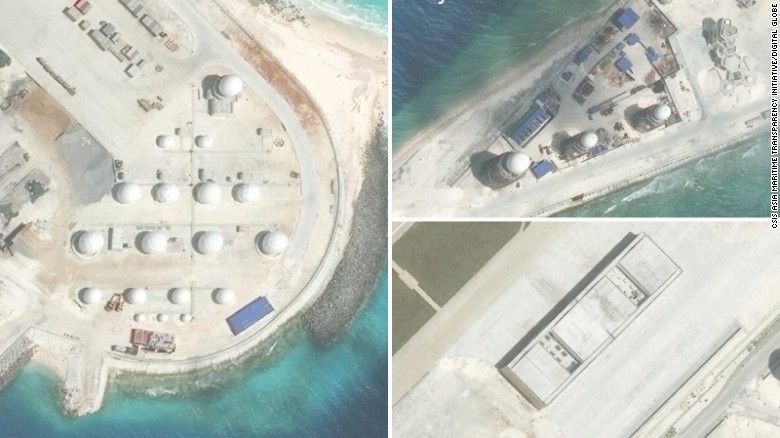ASIA MARITIME TRANSPARENCY INITIATIVE
On August 15, Philippine Congressman Gary Alejano released photographs of Chinese vessels, including fishing, coast guard, and navy ships, that he claimed had been operating within 1 to 3 nautical miles of Philippine-occupied Thitu, or Pag-asa, Island.
Citing military sources, the congressman said that at least two fishing ships, two Chinese naval vessels, and a China Coast Guard ship were operating around Thitu by August 12, with others, including at least one more navy ship, arriving over the next three days.
Thitu is the largest of the Philippines’ 10 occupied features in the Spratly Islands and is home to more than 100 Filipino civilians.

Alejano further claimed that the fishing ships included members of China’s maritime militia and that these vessels prevented a ship from the Philippine Bureau of Fisheries and Aquatic Resources from approaching the area on August 13.

Alejano further claimed that the fishing ships included members of China’s maritime militia and that these vessels prevented a ship from the Philippine Bureau of Fisheries and Aquatic Resources from approaching the area on August 13.
Finally, he said that a helicopter dispatched from one of the Chinese naval vessels was seen flying over unoccupied sandbars to the west/northwest of Thitu twice on August 15.
All of this suggested to Alejano that, “The Chinese have a sinister plan to occupy sandbars just west of Pag-asa that belong to us.”












So far neither Secretary of National Defense Delfin Lorenzana nor Secretary of Foreign Affairs Alan Peter Cayetano have confirmed or denied Alejano’s claims.












So far neither Secretary of National Defense Delfin Lorenzana nor Secretary of Foreign Affairs Alan Peter Cayetano have confirmed or denied Alejano’s claims.
AMTI imagery of the area from August 13 can help shine some light on the situation.
On that day, there were nine Chinese fishing ships and two naval/law enforcement vessels visible near Thitu (locations 1 and 2), with others possibly under cloud cover.
It is impossible to know if any of those ships might be affiliated with the maritime militia, but at least two appear to be actively fishing (locations 6 and 8), with their nets visibly in the water.
There also appears to be a Philippine fishing boat docked at the nearest of the unoccupied sandbars (location 12), possibly sent out from Thitu to investigate the Chinese presence.
The fishing vessels (locations 3-11) are all located between 1 and 5 nautical miles from Thitu, while the nearest military/law enforcement ship is about 3.6 nautical miles from the island.
The fishing vessels (locations 3-11) are all located between 1 and 5 nautical miles from Thitu, while the nearest military/law enforcement ship is about 3.6 nautical miles from the island.
The ships are between 9 and 14.25 nautical miles from Chinese-occupied Subi Reef to the southwest. It is important to note that ownership of the territorial waters in which these ships are operating is still legally disputed.
Subi was a low-tide elevation before China built an artificial island on it.
As such, it does not generate its own territorial sea but could bump out the territorial sea of at least one of the unoccupied sand cays, which is dry at high tide and located less than 12 nautical miles from it.
So it could be claimed that these ships are all operating within the territorial sea of both Thitu and the sand cay(s) with which Subi is associated.
Setting aside whether Chinese ships legally can fish within 1 nautical mile of Thitu Island, there is no doubt that doing so is highly provocative and runs counter to the narrative of a stable mutually-beneficial new status quo that Beijing has sought to project.
Setting aside whether Chinese ships legally can fish within 1 nautical mile of Thitu Island, there is no doubt that doing so is highly provocative and runs counter to the narrative of a stable mutually-beneficial new status quo that Beijing has sought to project.
The fact that law enforcement and naval vessels accompanied the fishermen makes it clear that this was not done without Chinese authorities being aware.
At best, they permitted their operation.
At worst, they escorted and guarded them.
The number and rapid coordination of naval and coast guard ships suggests that this was purposely organized in advance and was not just an ad hoc response by government vessels that happened to be in the area.
One possible explanation for the flotilla’s sudden and provocative appearance is that Beijing wanted to dissuade Manila from planned construction on Thitu.
One possible explanation for the flotilla’s sudden and provocative appearance is that Beijing wanted to dissuade Manila from planned construction on Thitu.
The Philippine government has said it plans to spend about $32 million on upgrades including a beaching ramp, desalination facilities, and long-overdue repairs to the islet’s crumbling runway. Those upgrades have been delayed, reportedly due to inclement weather, but Lorenzana has made clear that they remain in the pipeline.
In light of this week’s events, Manila might feel that those upgrades are even more urgent.



